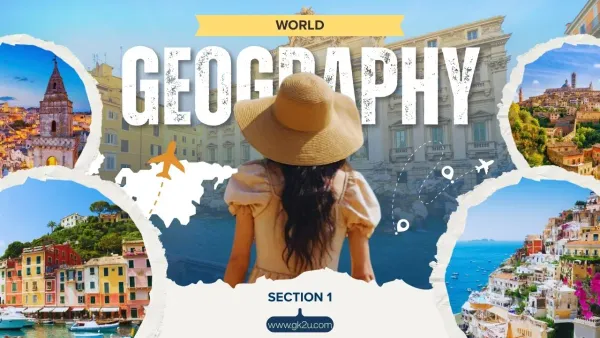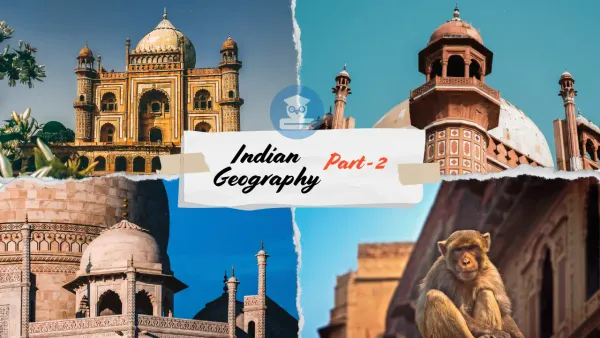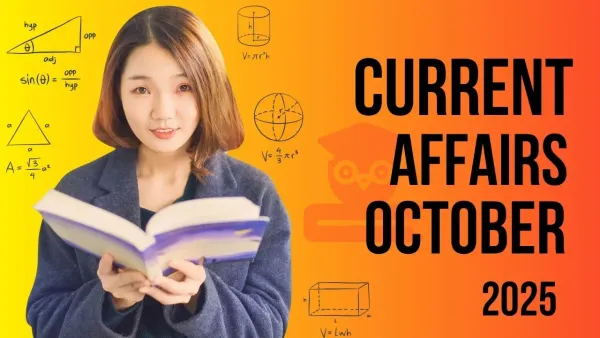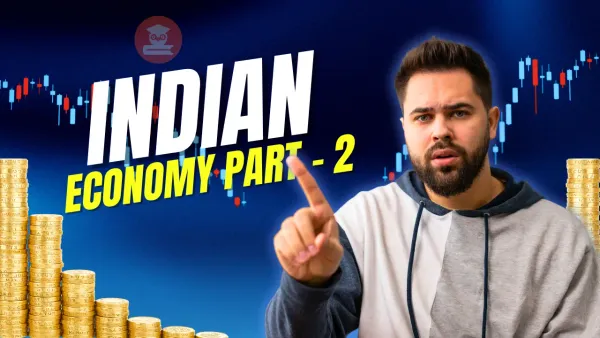Indian History – General Knowledge – 70 Important MCQs
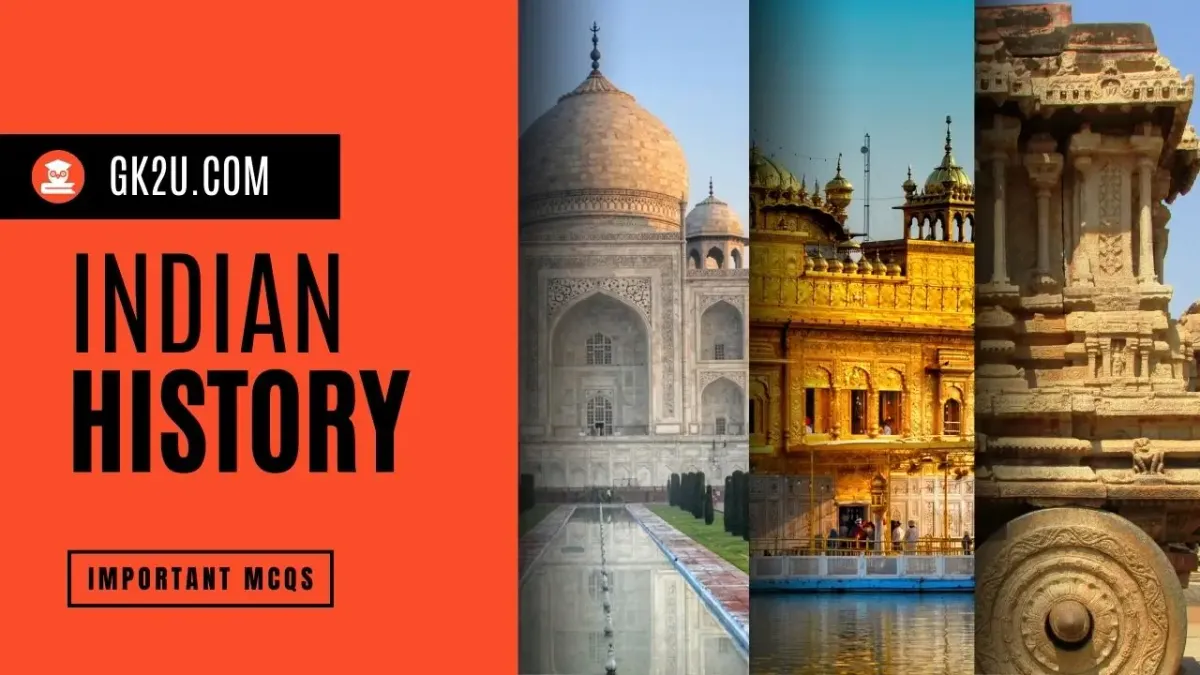
Indian History General Knowledge is an essential subject for students, aspirants, and history enthusiasts who wish to understand the rich heritage and evolution of the Indian subcontinent. Covering thousands of years, Indian history begins with the Indus Valley Civilization, moves through the Vedic age, the rise of great empires like the Maurya and Gupta dynasties, the arrival of Islam, the Delhi Sultanate, the Mughal Empire, and finally the British colonial period leading up to India’s independence in 1947. This vast timeline not only highlights political events but also reflects the growth of art, architecture, science, religion, and socio-economic systems that shaped modern India.
General Knowledge about Indian History equips learners with a strong foundation to answer competitive exam questions in UPSC, SSC, APSC, State PSCs, Railways, Defence, and other recruitment tests. Topics usually include ancient Indian history, medieval Indian history, and modern Indian history, along with important dates, personalities, movements, and cultural achievements. Knowing these facts enhances one’s understanding of the nation’s past and its influence on present-day society.
Whether you are preparing for exams or simply curious about India’s rich past, Indian History General Knowledge offers a comprehensive way to explore key events, turning points, and contributions that have defined India’s legacy. From the teachings of Ashoka to the policies of Akbar and from the Revolt of 1857 to the Freedom Struggle led by Mahatma Gandhi, this subject covers everything you need to know to gain an in-depth appreciation of India’s journey through time.
1. The trident-shaped symbol of Buddhism does not represent.
A. Nirvana
B. Sangha
C. Buddha
D. Dhamma
Correct Answer:A. Nirvana
2. Tripitakas are sacred books of.
A. Buddhists
B. Hindus
C. Jains
D. None of the above
Correct Answer:A.Buddhists
3. Under Akbar, the Mir Bakshi was required to look after.
A. Military affairs
B. The state treasury
C. The royal household
D. The land revenue system
Correct Answer:A.Military affairs
Answer Explanation: The head of the military was called the Mir Bakshi, appointed from among the leading nobles of the court. The Mir Bakshi was in charge of intelligence gathering, and also made recommendations to the emperor for military appointments and promotions.
4. The territory of Porus who offered strong resistance to Alexander was situated between the rivers of.
A. Sutlej and Beas
B. Jhelum and Chenab
C. Ravi and Chenab
D. Ganga and Yamuna
Correct Answer:B.Jhelum and Chenab
5. The Battle of Plassey was fought in.
A. 1757
B. 1782
C. 1748
D. 1764
Correct Answer:A.1757
Answer Explanation: The Battle of Plassey, 23 June 1757, was a decisive British East India Company victory over the Nawab of Bengal and his French allies, establishing Company rule in South Asia which expanded over much of the Indies for the next 190 years. The battle took place at Palashi, Bengal, on the river banks of the Bhagirathi River, about 150 km north of Calcutta, near Murshidabad, then capital of undivided Bengal. The belligerents were Siraj-ud-daulah, the last independent Nawab of Bengal, and the British East India Company.
6. The Vijayanagara ruler, Kirshnadev Raya's work Amuktamalyada, was in.
A. Telugu
B. Sanskrit
C. Tamil
D. Kannada
Correct Answer:A.Telugu
7. Through which one of the following, the king exercised his control over villages in the Vijayanagar Empire?
A. Dannayaka
B. Sumanta
C. Nayaka
D. Mahanayakacharya
Correct Answer:D. Mahanayakacharya
8. The system of competitive examination for civil service was accepted in principle in the year
A. 1833
B. 1853
C. 1858
D. 1882
Correct Answer:B.1853
9. The treaty of Srirangapatna was signed between Tipu Sultan and
A. Robert Clive
B. Cornwallis
C. Dalhousie
D. Warren Hastings
Correct Answer:B.Cornwallis
10. The theory of economic drain of India during British imperialism was propounded by
A. Jawaharlal Nehru
B. Dadabhai Naoroji
C. R.C. Dutt
D. M.K. Gandhi
Correct Answer:B.Dadabhai Naoroji
11. Under an agreement with which of the following countries did Subhas Chandra Bose organize the Indian soldiers, taken as prisoners by the Axis Powers, into the Azad Hind Fauj?
A. China
B. Germany
C. Italy
D. Japan
Correct Answer:D. Japan
12. We hear of two envoys being sent to the Roman kings, one in 27-28 AD to the court of Augustus and the other in 110-20 AD to the court of
A. Cartius
B. Trajan
C. Nero
D. Brutus
Correct Answer:B. Trajan
13. The use of Kharoshti in ancient Indian architecture is the result of India's contact with
A. Central Asia
B. Iran
C. Greece
D. China
Correct Answer:C. Greece
14. Vaikhanasa the five-fold conception of Vishnu consists of
I. brahman
II. purusha
III. prakriti
IV. satya
V. achyuta
VI. aniruddha
A. I, II, III, IV and V
B. II, III, IV, V and VI
C. I, II, IV, V and VI
D. I, III, IV, V and VI
Correct Answer:D. I, III, IV, V and VI
15. The troops raised by the emperor but not paid directly the state and place under the charge of mansabadars were know as
A. Walashahi
B. Barawardi
C.JCumaki
D. Dakhili
Correct Answer:D. Dakhili
16. The treaty of Mangalore was signed between
A. the English East India Company and Haidar Ali
B. the English East India Company and Tipu Sultan
C. Haidar Ali and the Zamorin of Calicut
D. the French East India Company and Tipu Sultan
Correct Answer: B. the English East India Company and Tipu Sultan
17. To conquer and annex Peshawar and Punjab, Mahmud of Ghazni defeated
A. Ghurids
B. Arabs
C. Karkotakas
D.Hindushahis
Correct Answer: D.Hindushahis
18. To which professions earlier leaders who struggled for freedom of India mainly belonged?
A. Lawyers
B. Teachers
C. Journalists
D. All of the above
Correct Answer: D. All of the above
19. The victories of Karikala are well portrayed in
A. Palamoli
B. Aruvanad
C. Pattinappalai
D. Padirrupattu
Correct Answer: C. Pattinappalai
20. Todar Mal was associated with
A. music
B. literature
C. finance
D. law
Correct Answer: C. finance
21. The title of 'Viceroy' was added to the office of the Governor-General of India for the first time in
A. 1848 AD
B. 1856 AD
C. 1858 AD
D. 1862 AD
Correct Answer: C. 1858 AD
22. To which of the following dynasties did King Bhoja, a great patron of literature and art, belong?
A. Karkota
B. Utpala
C. Paramara
D. Gurjara Pratihara
Correct Answer: C. Paramara
23. Vikramaditya, a king of Ujjain, started the Vikrama samvat in 58 BC in commemoration of his victory over
A. Indo-Greeks
B. Sakas
C.Parthians
D. Kushanas
Correct Answer: B. Sakas
24. Two of the great Mughals wrote their own memories. There were
A. Babar and Humayun
B. Humayun and Jahangir
C. Babar and Jahangir
D. Jahangir and Shahjahan
Correct Answer: C. Babar and Jahangir
25. To which king belongs the Lion capital at Sarnath?
A. Chandragupta
B. Ashoka
C. Kanishka
D. Harsha
Correct Answer: B. Ashoka
26. The use of the spinning wheel (Charkha) became common during the
A. 9th Century AD
B. 10th Century AD
C. 12th Century AD
D. 14th Century AD
Correct Answer: D. 14th Century AD
27. The language of discourses of Gautama Buddha was
A. Bhojpuri
B. Magadhi
C. Pali
D. Sanskrit
Correct Answer: C. Pali
28. There were widespread risings against the British in the 1820s. Which one of the following did not revolt in the 1820s?
A. Santhals
B. Ahoms
C. Pagal Panthis
D.Ramosi
Correct Answer: A. Santhals
29. Velu Thampi led a revolt against the British in state of
A. Travancore
B. Baroda
C. Hyderabad
D. Mysore
Correct Answer: A. Travancore
30. Under the Mountbatten Plan of 1947, the people of ___ were given the right to decide through a plebiscite whether they wished to join Pakistan or India.
A. Assam
B. Punjab
C. Bengal
D. N.W.F.P and the Sylhet district of Assam
Correct Answer: D. N.W.F.P and the Sylhet district of Assam
31. Three major powers that emerged in southern India in the 7th century AD were
I. Cheras
II. Cholas
III. Chalukyas
IV. Pallavas
V. Pandyas
A. I, II, V
B. II, III, IV
C. III, IV, V
D. I, II, IV
Correct Answer: A. I, II, V
32. The term 'Yavanapriya' mentioned in ancient Sanskrit texts denoted
A. ivory
B. pepper
C. a fine variety of Indian muslin
D. damsels sent to the Greek court for dance performance
Correct Answer: B. pepper
33. The Timariots Governors and the Revenue Contractors, on their part reason in this manner: "Why should the neglected state of this land create uneasiness in our minds and why should we expend our money and time to render it fruitful? We may be deprived of it in a single moment, and our exertions would benefit neither ourselves nor our children." This statement was made by
A. Monserrate
B. Tavernier
C. Manrique
D. Bernier
Correct Answer: D. Bernier
34. The ultimate ownership of land during the post-Gupta period lay with
A. the cultivator
B. the village community
C. the king
D. the joint family
Correct Answer: C. the king
35. To which of the Republic of Buddha belong?
A. Licchavis
B. Sakyas
C. Mallas
D. None of the above
Correct Answer: B. Sakyas
36. There was a sharp class division at Harappa and Mohenjodaro. This is clear from the
A. Indus seals excavated
B. religious beliefs of the Harappans
C. tools and implements used by the Harappans
D. different types of dwellings excavated
Correct Answer: D. different types of dwellings excavated
37. The title given by the British Government to Mahatma Gandhi which he surrendered during the noncooperation movement was
A.Hind Kesari
B.Kaiser-e-Hind
C.Rai Bahadur
D.Rt. Honorable
Correct Answer: B.Kaiser-e-Hind
38. Tipu Sultan was the ruler of
A. Hyderabad
B. Madurai
C. Mysore
D. Vijayanagar
Correct Answer: C. Mysore
39. The term yavanika meant
A. foreign goods
B. dancer
C. curtain
D. theatre
Correct Answer: C. curtain
40. The term Khalisa in Mughal administration signified the
A. entire Imperial establishment
B. land owned by the emperor himself
C. religious land grants
D. land from where revenue was collected for the Imperial Treasury
Correct Answer: B. land owned by the emperor himself
41. Visakhadatta sketches the event after the death of Samudragupta in his work
A. Mudrarakasam
B. Devi Chand Gupta
C. Mrichekakatika
D. Malavikagnimitra
Correct Answer: A. Mudrarakasam
42. The system of Dual Government during the latter half of the 18th century AD is associated with the name of
A. Clive
B.Cornwallis
C.Warren Hastings
D. William Bentinck
Correct Answer: A. Clive
43. 'The Vedas contain all the truth was interpreted by
A. Swami Vivekananda
B. Swami Dayananda
C. Raja Rammohan Roy
D. None of the above
Correct Answer: B. Swami Dayananda
44. The term Samanta, meaning a feudatory from the sixth century AD, originally meant a
A. slave
B. cultivator
C. neighbor
D. foreigner
Correct Answer: C. neighbor
45. To evolve a peaceful settlement of the conflict between India and China, which of the following non-aligned Afro-Asian nations participated in a conference held in December 1962?
A.Burma (now Myanmar), Cambodia, Indonesia and UAR
B.Burma, Sri Lanka, Cambodia and Indonesia
C.Burma, Indonesia, Ghana and Sri Lanka
D.All of the above
Correct Answer: D.All of the above
46. The text of the document called Mahzar, by which Akbar assumed the role of supreme arbiter in the matters of religion is found in
A. Nizamuddin's Tabaqat-I-Akbari
B. Arif Quandahari's Tarikh-I-Alfi
C. Abul Fazl's Akbarnama
D. Badauni's Muntakahab-ut-Tawarikh
Correct Answer: C. Abul Fazl's Akbarnama
47. Tulsidas, the author of Ramcharitmanas, was a contemporary of which of the following rulers?
A. Akbar
B. Humayun
C. Shahjahan
D. Sher Shah Suri
Correct Answer: A. Akbar
48. To meet the educational needs of the people, the Madarasa-I Nasiri was built in the region of
A. Qutub-ud-din Aibak
B. Iltutmish
C. Ruknuddin Firoz Shah
D. Jalal-id-din Khilji
Correct Answer: B. Iltutmish
49. The weekly Commonweal was founded by
A. Annie Besant
B. Bipan Chandra Pal
C. Bal Gangadhar Tilak
D. Sarojini Naidu
Correct Answer: A. Annie Besant
50. Ustad Mansur was a famous painter in the region of
A. Shajahan
B. Akbar
C. Humayun
D. Jahangir
Correct Answer: D. Jahangir
51. The Vedic deity Indra was the Goddess of
A. wind
B. eternity
C. rain and thunder
D. fire
Correct Answer: C. rain and thunder
52. Tolkappiyam is associated with the
A. first Sangam period
B. second Sangam period
C. third Sangam period
D. post-third Sangam period
Correct Answer: B. second Sangam period
53. Pulakesin II was the most famous ruler of
A. Chalukyas
B. Cholas
C. Pallavas
D. Satavahanas
Correct Answer: A. Chalukyas
54. The term Brahmadeya occurs for the first time in
A. early Vedic texts
B. early Buddhist texts
C. pre-Gupta inscriptions
D. post-Gupta inscriptions
Correct Answer: C. pre-Gupta inscriptions
55. Under whose leadership was the all India Muslim League set up?
A. Mohammed Ali Jinnah
B. Sayyid Ahmed Khan
C. Aga Khan
D. All of the above
E. None of the above
Correct Answer: C. Aga Khan
56. Though Ashoka had many sons, the inscriptions mentioned only one who is not mentioned in any other source. He is
A. Kunala
B. Tivara
C. Mahendra
D. Jalauka
Correct Answer: B. Tivara
57. We can know about the early Vedic period from
A. archaeological excavations
B. the Rig Veda
C. Jatak Katha
D. contemporary culture
Correct Answer: B. the Rig Veda
58. The Upanishads are
A. a source of Hindu philosophy
B. books of ancient Hindu laws
C. books on the social behavior of man
D. prayers to God
Correct Answer: A. a source of Hindu philosophy
59. Universities in the Presidency towns in India were established in
A. 1857
B. 1858
C. 1900
D. 1909
Correct Answer: A. 1857
60. The Vijayanagara king who employed skilled archers of the Turkish clan and raised the fighting capacity of his bowmen was
A. Bukka I
B. Devaraya I
C. Krishnadevaraya
D. Ramaraya
Correct Answer: B. Devaraya I
61. Under the Guptas in eastern India, there was probably an intermediate level of administration between vishayas (districts) and villages. Identify it.
A. Bhukit
B.Pradesa
C. Vithi
D. Ahara
Correct Answer: C. Vithi
62. The two principles monuments of Alauddin Khilji's reign - the Jama at Kana Masjid and Alai Darwaza -
were constructed at
A. Agra
B. Delhi
C. Dhar
D. Gulbarga
Correct Answer: B. Delhi
63. The term Nirgrantha is associated with
A. Ajivikas
B. Charvakas
C. Jainas
D. Pasupatas
Correct Answer: C. Jainas
64. The Kalinga was fought in
A. 321 BC
B. 301 BC
C. 261 BC
D. 241 BC
Correct Answer: C. 261 BC
65. Under the Government of India, Provincial Legislatures consisted of two chambers, except in the case of
A. Assam
B. Bihar
C. Madras
D. Punjab
Correct Answer: D. Punjab
66. The Venetian traveler who traveled with his wife and reached Vijayanagar around 1420 was
A. Athanasius Nikitin
B. Nicolo de Conti
C. Ibn Batuta
D. Ferishta
Correct Answer: B. Nicolo de Conti
67. The year 788 AD was a good one for Hinduism. Why?
A. Shankaracharyawas born that year.
B. Harsha Vardhana, the last Buddhist king, died.
C. Samudragupta converted to Hinduism.
D. All Muslim invaders were defeated.
Correct Answer: A. Shankaracharyawas born that year.
68. The Uprising of 1857 was described as the first Indian war of Independence by
A. S.N. Sen
B. R.C. Mazumdar
C. B.G. Tilak
D. V.D. Savarkar
Correct Answer: D. V.D. Savarkar
69. The twenty-third Jaina teacher, Parsva, the immediate predecessor of Mahavira enjoined on his disciples four great vows. To these Mahavira added which of the followings as the fifth vow?
A. Abstention from stealing
B. Non-injury
C. Brahmacharya or continence
D. Non-attachment
Correct Answer: C. Brahmacharya or continence
70. The Turko-Afghan rule in India lasted for about
A. two centuries
B. three centuries
C. four centuries
D. a little over one century
Correct Answer: B. three centuries


